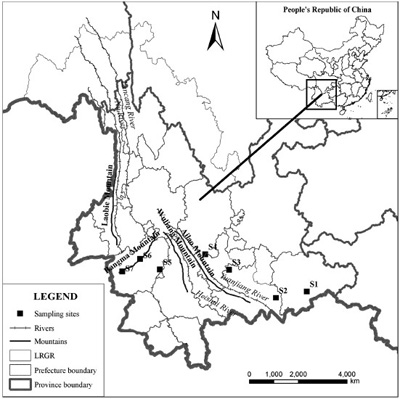Study of the “Corridor-Barrier” Effect in Longitudinal Range-Gorge Region with Pollen Evidence of Southwestern China
Regional differentiation of natural elements is one of the most important research directions of integrative research of physical geography. The longitudinal mountains and valleys in southwestern China serve significant “corridor-barrier” function to the natural matters and energy and form the present special regional difference characteristic.
 |
| Fig. 1. Location of study area and the sampling sites |
Results show that there are significant differences between the east and the west sides of Ailao Mountain which serves an important geographical dividing line in LRGR. Obvious spatial differences of pollen assemblages are relevant to different regional topography and climatic conditions. The spatial differences between pollen assemblages would be caused by the different pattern of hydrothermal condition in the unique topography of the LRGR. The barrier function of the vertical mountain ranges, especially by the Ailao Mountain, may be a main factor in such environmental differences. Two separate monsoon circulations occurring in Pacific and Indian oceans result in different hydrothermal characteristics causing the regional differentiated patterns in the pollen assemblages in the Longitudinal Range-Gorge Region.
For detailed information, please seeDownload attachments: